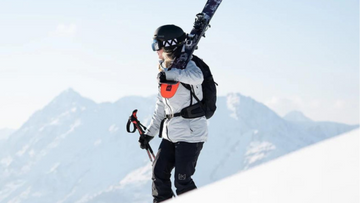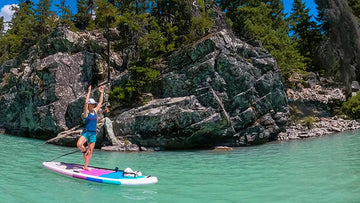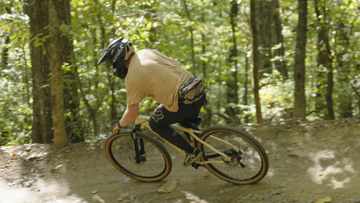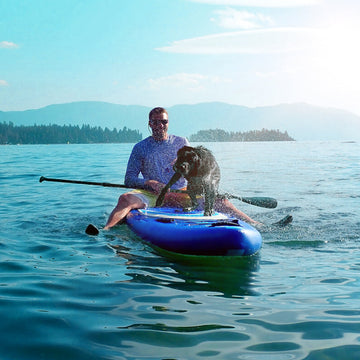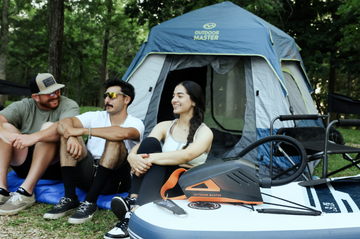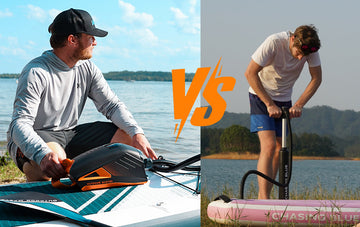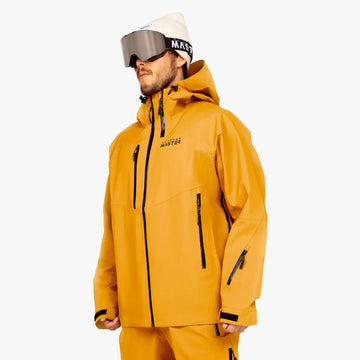The best SUP paddleboards look similar to surfboards - both can ride the waves - but that's where their similarity ends. The main difference between a standup paddleboard and a surfboard is that it's easy for anyone to balance on a SUP (Standup Paddleboard) - but hard to learn to stand up on a surfboard.
Furthermore, inflatable SUP paddleboards can be used for more activities than surfboards, making them the perfect choice for all paddleboarding holidays. They are also a great way to get fit on holiday and have fun while doing so - or just use your SUP to enjoy a leisurely sightseeing cruise on calm waters - and enjoy the beauty of nature.
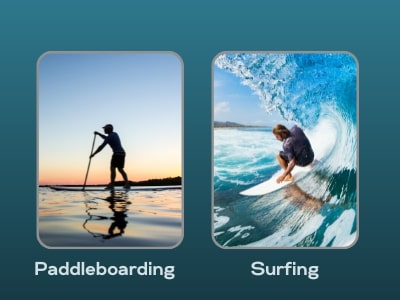
Table of content
Inflatable SUP Paddleboards and Surfboards Look Different The Best SUP Paddleboards for Beginners are Inflatable Inflatable SUP Paddleboard Sizes: Paddleboards Ride Waves Like Surfboards 4 Tips for Paddleboarding Holidays: Inflatable SUP Paddleboards are Diverse! 6 Parts Inflatable SUP Paddleboards and Surfboards Share Terminology that SUP Paddleboards and Surfboards Share: Support and Stability vs. Speed and Balance: Main Differences between Inflatable SUP Paddleboards and Surfboards: Different Uses for Inflatable SUP Paddleboards and Surfboards The Best Place to Buy an Inflatable SUP for your Paddleboarding HolidayInflatable SUP Paddleboards and Surfboards Look Different
Paddleboards are generally longer, wider, and thicker than surfboards because they float on the water's surface - and must support the weight of a standing body.
Surfboards are usually longer, sleeker, and thinner than SUPs because they are made to race down the slope of waves and be super-reactive - and the shape lends them speed.
The only exceptions are beginner's surfboards and longboards, which look similar to paddleboards because of their width, long shape, and rounded hull - these boards are made to be buoyant and, by design, slower on a wave.
The Best SUP Paddleboards for Beginners are Inflatable | Used with Dry Bag and Electric SUP Pump

The best SUP paddleboards for beginners are inflatable, with a non-slip deck pad for grip and paddle - accessories that surfboards don't possess. These added features make them super buoyant, well-balanced, easy to stand up on, and simple to paddle and steer forward.
Furthermore, inflatable SUP paddleboards can be blown up on location using a portable electric pump. It's rechargeable and can pump up to 3 boards. The pump can extract air and deflate your board, making packing easy. 
It’s a good idea to purchase a dry bag, which comes in a selection of fun colors - if you're going on paddleboarding holidays. The dry bag comes in two sizes: 10 liters and 20 liters. Both fit comfortably in the trunk of a car or behind a driver's seat. And, they can be carried quite easily to the location you are planning to paddleboard.
Inflatable SUP Paddleboard Sizes:
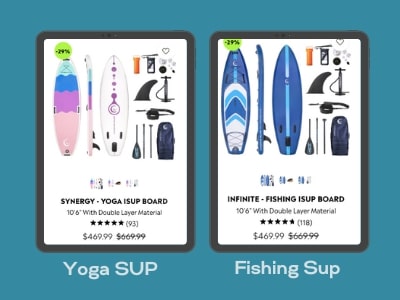
If you're planning a paddleboarding holiday and wondering which size inflatable SUP paddleboard to purchase, Outdoormaster offers different sizes to suit your height and weight - and they are all suitable for pros and beginners.
All the boards at Outdoor Master come with a free portable hand pump and a strong backpack for storage and transport. Furthermore, most models come with a waterproof case for your mobile phone.
If you're touring or sightseeing, choose a longer touring board with more storage space at the front - and you can bring a backpack with suncream, a towel, a packed lunch, and whatever you need for a fun day out on the water - even your pet.
All-Round Boards:
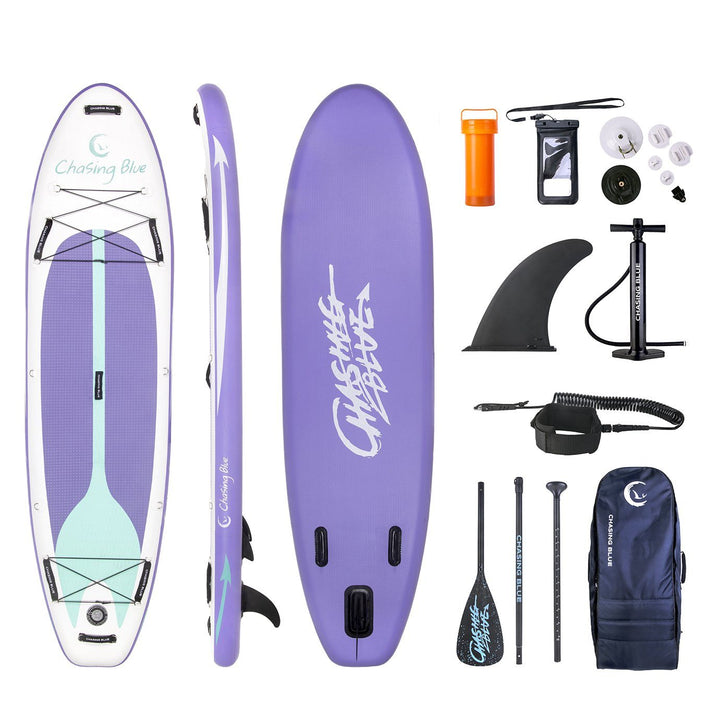
VIOLET SPIRIT - ALL ROUND iSUP BOARD
10'6" FOR ALL-LEVEL
USE CODE: OMBLOG20 for 10% OFF

SOLAR SPIRIT - ALL ROUND iSUP BOARD
11'6" FOR ALL-LEVEL
USE CODE: OMBLOG20 for 10% OFF
- Small to large body shapes: 10 foot 6 inches
- Large to extra large body shapes: 11 foot 6 inches
- As a rule of thumb, go by your T-shirt size S - L or L - XXL.,
Yoga SUP paddleboards: 10 feet 6 inches long.

SYNERGY - YOGA ISUP BOARD
10'6" With Double Layer Material
USE CODE: OMBLOG20 for 10% OFF
Touring SUPs: 12 feet 6 inches long.

ORION - TOURING iSUP BOARD
12'6" With Double Layer Material
USE CODE: OMBLOG20 for 10% OFF
Fishing SUPs: 10 feet 6 inches long.
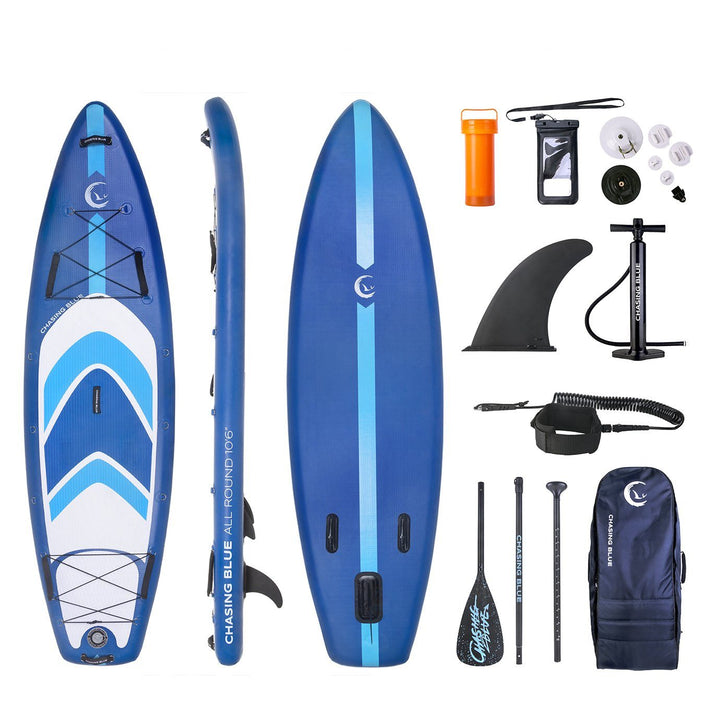
INFINITE - FISHING iSUP BOARD
10'6" With Double Layer Material
USE CODE: OMBLOG20 for 10% OFF
Racing SUPs: 11 feet.
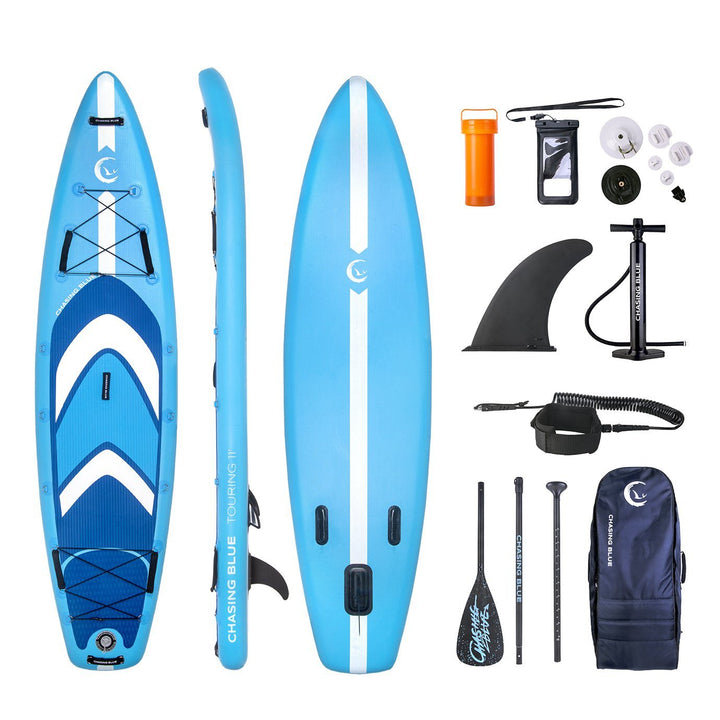
ACE - RACING iSUP BOARD
11' With Double Layer Material
USE CODE: OMBLOG20 for 10% OFF
Paddleboards Ride Waves Like Surfboards
And yes, you can also surf waves and choppy waters with the best SUP paddleboards, but you'll need practice and experience to get to that level. When you begin learning to stand up on a board in the ocean, it's wise to start in calm water with onshore wind conditions - and at the most, small gentle waves that come in slow sets.
4 Tips for Paddleboarding Holidays:
- Begin using your new inflatable sup paddleboard on a calm body of water - like an inland lake or a lagoon - in balmy conditions.
- Don't go out into rough or choppy water or when the wind is strong.
- Always check the wind speed and the weather conditions before planning an inflatable sup paddleboard adventure.
- Always tell someone where you are going and when you plan to return, just in case. And bring a cell phone along to call for a lift home, in case you travel off-course.
Inflatable SUP Paddleboards are Diverse!
Inflatable SUP paddleboards are not only easier to stand up and balance on, but they're also much more diverse than surfboards - because they have many uses. Surfing needs waves - and the right ones - yet a paddleboard is fun to use on flat calm water like lakes, rivers, and canals, as well as on the sea.
There are also a lot of great activities you can do with a paddleboard, such as fishing, sightseeing, yoga, racing, and whitewater rafting.
Before we plunge into more detail about the difference between a standup paddleboard and a surfboard, you'll need to know the names of the parts that all wave boards share in common. And the terminology surrounding them. Let's have a closer look:
6 Parts Inflatable SUP Paddleboards and Surfboards Share
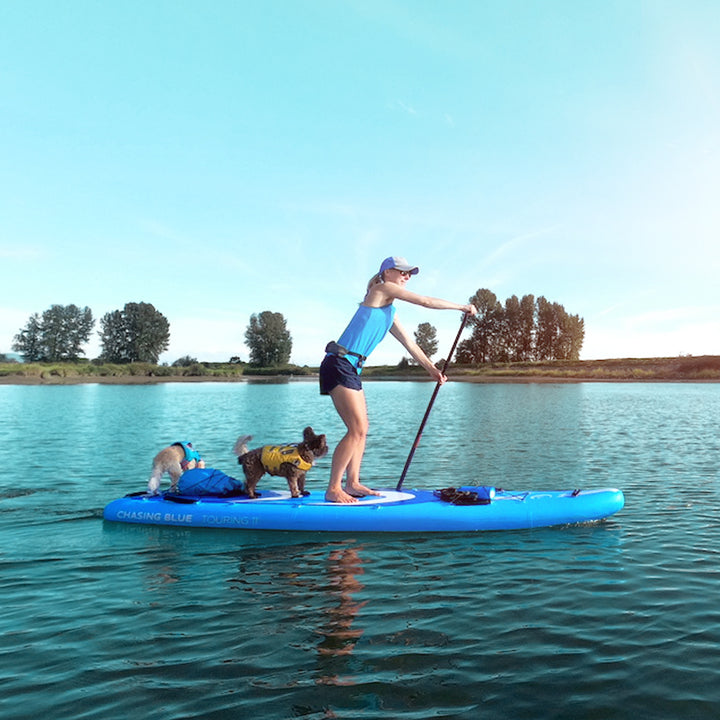
- Nose: The front end of the board.
- Tail: The back end of the board.
- Deck: The top surface of the board. On paddleboards, the deck will have a non-slip surface.
- Rails: The sides from nose to tail. The rails on surfboards are thinner - to slice into a wave - creating speed. On SUPs, the rails are thicker and rounder for stability and control.
- Fins: Downward pointing blades fixed underneath the board that lends stability. The number varies from one central fin placed aft (behind)- to three fins placed in a triangle formation. The triangle fin formation lends more stability, and the best SUP paddleboards come with a detachable set of three fins.
- Underside: The bottom part of the board - which can be flat, curved, or doubly curved, depending on the use of the board.
Terminology that SUP Paddleboards and Surfboards Share:
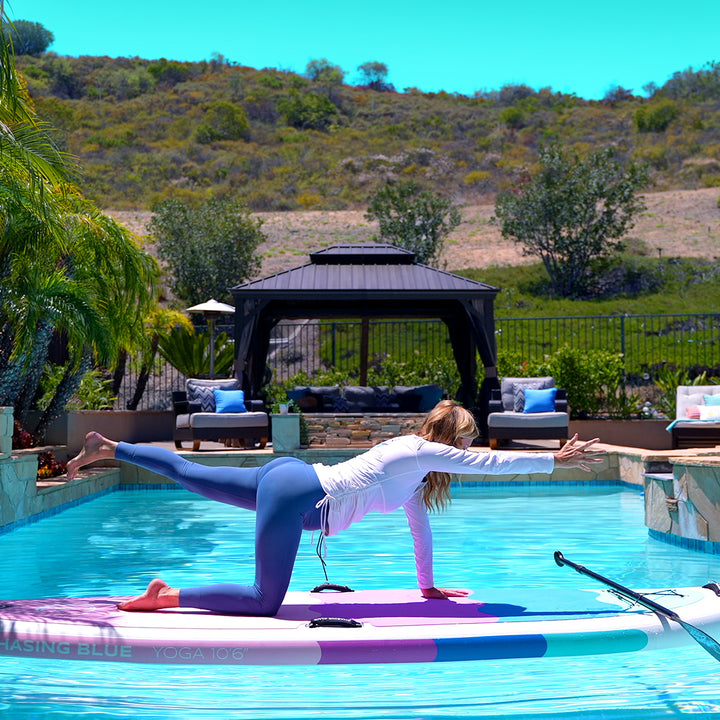
- Length: From nose to tail
- Width: From rail to rail
- Thickness: From concave to deck
- Outline: The board's shape
- Rocker: The curve from nose to tail
- Concave: The contour of the underside
Now we know the basic anatomy of wave boards, let's dive into more detail about what makes an inflatable SUP paddleboard different from a surfboard. The features mostly have to do with the board design, which dictates its function.
Support and Stability vs. Speed and Balance:
Paddleboards bear the weight of a standing person rowing forward with a paddle, so they're designed for support and stability.
Surfboards are for racing down the slope of waves, and their design aim is speed and balance. Six prominent design features set these boards apart. Let's have a look:
4 Main Differences between Inflatable SUP Paddleboards and Surfboards:

4 main technical features make an inflatable SUP paddleboard different from a surfboard:
1. Buoyancy:
The best inflatable paddleboards are much more buoyant than surfboards; they float well and support the weight of a human body - or even a couple of people - without sinking. They are also very stable and maneuverable because of this.
Surfboards are less easy to stand on because the wave's speed provides the force that keeps the board gliding over the sea surface. Once the wave breaks - and slows - the surfboard will sink.
The reason paddleboards and surfboards perform differently is because of the way they are made - and the materials they're made of.
SUPs and Surfboards are Made Differently
Because paddleboards need to be light, their core is usually hollow or filled with foam and then covered by a thin layer of fiberglass and an epoxy resin coat. This makes them thicker in width than surfboards, lighter in weight - and much more floatable and stable.The best SUP paddleboards for beginners are inflatable standup paddleboards because they are durable, light, buoyant - and easy to use.
Materials used for SUP Paddleboards and Surfboards
Inflatable SUP paddle boards consist of two light layers of polyester material reinforced by thousands of tiny stitches. Then an air-tight coating goes over the outside surfaces of both sides of the material. Ater, you inflate a SUP, it's durable and strong.Surfboards are usually composed of a robust and rigid polyurethane foam core, wrapped in layers of fiberglass cloth and finished with epoxy resins. The design is more compact; in width, breadth, and length overall - than a paddleboard. Although it is still light, a surfboard will only float if the surfer is lying belly-down on the board.
2. The Board Shape:
The shape of paddleboards and surfboards differ because the design is for different purposes. Unless your SUP is for racing or paddleboard surfing, it will look different from a surfboard on the following four key points:
The Hull
Paddleboards and surfboards classify as vessels, just like boats. And, just like boats, the design of the hull affects how they move through the water. There are two kinds of wave board hulls, displacement hulls - and planing hulls. Both serve a very different purpose.Displacement Hulls
Displacement hulls are rounded and push through water slowly, displacing it and staying partially under the surface - which keeps them stable. You find displacement hulls on most inflatable sup paddleboards.Planing Hulls:
The shape of surfboard hulls is more pointed, like an arrow that curves upwards at the tip. This shape makes it a planing hull, where planing means lifting and gliding over the waves, not plowing through them.The V-shape at the front end of the board results in more speed and the ability to take turns tightly and accurately. But it also makes the board far harder to control - and you'll need plenty of practice to guide a racing paddleboard or a surfboard.

3. The Board Tail:
There are three shapes of board tails; the round, the square, and the pin tail. The difference between SUP paddleboards and surfboards is that square and pin shapes - or a combination of both - are often found on surfboards. And the best SUP paddleboards for beginners and intermediates have round tails, which lend more stability.
- A pin tail comes to a pointed shape at the end of the board and helps the board to move in a straight line, perfect for sightseeing and long-distance racing. A pin tail is the best for big wave surfing - where added rail volume gives a better grip. The pin tail shape isn't great for making tight turns. And it's not as stable as a square tail because it results in less volume and less buoyancy at the back.
- A square tail is more stable because it holds more volume than a V-shape, which gives it more buoyancy. A square tail-end makes the board easier to turn and allows a faster speed over water than a pin tail.
Inflatable sup paddleboards have rounded tail-ends - a blend of the pin and the square tail varieties. The thick rounded nose shape allows the board to maneuver flexibly and fast - while still having buoyancy.
4. The Rocker:
The underside curve of a wave board hull is called the rocker. The more rocker (or curvature) a hull has, the more responsive it is, which means it can change direction fast. The flatter the rocker, the more stable the board, but the less easy it is to maneuver in a tight space - like on the surface of a wave.
The difference between standup paddleboards and surfboard rockers is that surfboards have more curvature that helps them cruise curling waves and take turns fast. The best SUP paddleboards tend to have a single gently concave or flat rocker suitable for calm water and open spaces to take turns at smooth wide angles.
A flat or gently curved rocker will ensure the board is stable but can still perform gentle maneuvers without capsizing.
Different Uses for Inflatable SUP Paddleboards and Surfboards
As we mentioned at the beginning of this blog, surfboards only speed on waves - although a surfer must lie flat and paddle out through the breakers using their arms - to catch them.
Inflatable SUP paddleboards are far more versatile and easy for beginners because you can use them on rivers, lakes, and the sea, whether there are waves or not. And, they are far easier to transport in a backpack to any location because they can be deflated and packed down after use.
The Best Place to Buy an Inflatable SUP for your Paddleboarding Holiday
For a comprehensive selection of the best SUP paddleboards, shop online at Outdoor Master for the best SUP paddleboards. You will find the perfect board for your fun paddleboarding holiday activity, whether it's a quiet touring trip down a river or some fun racing on a lagoon - or surfing the waves like a pro. Have fun with your inflatable SUP paddleboard, and enjoy the ride!


